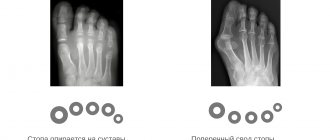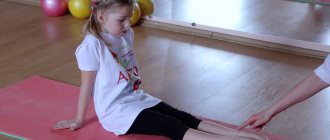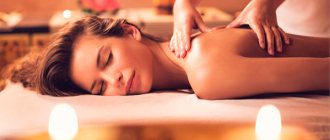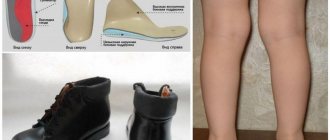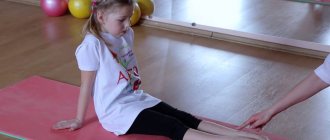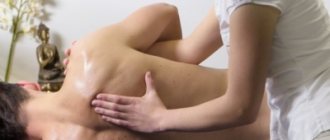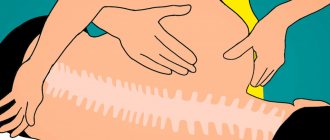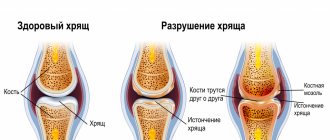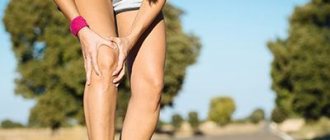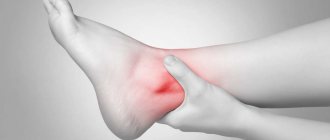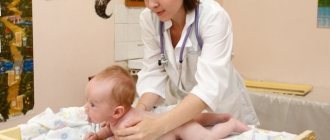Massage for flat feet: benefits and contraindications
First of all, it is worth understanding the features of the physiotherapeutic procedure. Massage of the legs and feet is useful not only for the main types of flat feet and in the case of their combination (longitudinal-transverse), but also for valgus flat feet, clubfoot in children and adults.
This treatment method allows:
- strengthen muscle tissue and properly form the arches of the feet;
- restore foot function;
- stop bone tissue deformation;
- improve blood circulation in the distal part of the limb;
- normalize the process of metabolism and cellular nutrition of muscles and ligaments;
- increase joint flexibility.
Even if the main indication for massage of the legs and feet is flat feet, doing a massage will be beneficial for the entire body as a whole. After all, on human feet there are more than 70 thousand nerve endings, which are projections of human organs. And by performing a massage to treat flat feet, you can activate your immune system and improve your health. Therefore, the answer to the question whether a massage procedure helps with diseases of the musculoskeletal system will sound like “yes, and not only.”
Will massage always help, or can it do harm? Since massage is a physiotherapeutic procedure, it, of course, has contraindications for use. The attending physician must be informed about the presence of them in the patient. In this case, he will select an alternative therapeutic method. There are the following contraindications for massage for flat feet:
- feverish conditions;
- bleeding and hemorrhage;
- acute osteomyelitis;
- malignant neoplasms;
- enlarged lymph nodes;
- damage to the bone tissue of the lower limb;
- tuberculosis;
- psychological personality disorders.
There are conditions that require consultation with a specialist. These are pregnancy, diabetes and varicose veins.
Reasons for development
In order to know how to treat flat feet, it is important to study the causes of its occurrence. This is necessary in order to eliminate the factor that can provoke or aggravate the development of straightening of the arch of the foot. The most common reasons are:
- Pathological development of the lower limb in the womb.
- Genetic predisposition.
- Wearing shoes for a long time.
- Inconvenient or poor quality shoes.
- Reduced physical activity.
- Unbalanced diet.
- Injuries of the lower extremities.
- Rickets.
- The child is overweight.
If you have identified a reason that could contribute to the development of flat feet in your baby, try to prevent it. This will help eliminate the symptoms of the disease.
There are three types of flat feet:
- Longitudinal curvature is characterized by compaction of the inner and outer arches of the foot. This is the most common type of this disease.
- Transverse curvature is characterized by compaction of the transverse arch of the foot and its forepart.
- The combined look is a complete seal of the foot in all directions.
The severity of the disease is also distinguished:
- In the first degree of severity, the child begins to complain of weakness and pain in the legs when walking for a long time. When examining the foot, no deformation is visible.
- In the second degree, children complain of pain not only during physical activity, but also at rest. If you examine the feet, you can notice the widening of the foot in the middle part. When walking, it manifests itself as clubfoot.
- With the third degree of severity, the pain is localized not only in the legs, but also in the back. Visually noticeable deformation of the foot, which is accompanied by the development of scoliosis.
Massage technique for flat feet
Massage for flat feet, like any procedure, has its own technique. The specificity lies in the inextricable connection between this procedure and back massage.
!
For flat feet, massage of the lower extremities and lumbar region is combined for a more significant and rapid effect.
The innervation of the legs begins in the spine area, so massage actions begin precisely from the lumbar region, then the massage therapist alternately works on the areas of the hips, legs, and only then the feet.
There are many techniques used to massage the legs for flat feet (both longitudinal and transverse). But, as a rule, the main ones are the following:
- First of all, the calf muscles are worked, then the Achilles tendon, ankle and sole. Then the re-working of all zones begins along an ascending line;
- general preparatory massage begins with the area of the knee joint, then gradually all areas of the outer side of the limb are worked out, including the fingers. Particular attention is paid to the ankle - first on the outer, then on the inner sides. Afterwards, manipulations with the sole begin. The end point of the foot massage is the hill at the big toe.
If flat feet are diagnosed, therapeutic massage will contain massage movements such as:
- rubbing: circular, straight and spiral;
- squeezing: beak-shaped and transverse;
- stroking: straight and alternating;
- compression of the feet;
- kneading: circular, combined, double circular and ordinary.
In addition, foot massage for flat feet should include corrective exercises. This is a set of exercises that create passive and active load on the limb, which allows you to correct defects:
- flexion/extension of the entire limb;
- moving/spreading fingers;
- rotation of feet
!
When performing massage not only for flat feet and valgus, but also for other indications, it is important to consider the frequency of sessions.
How often does it need to be done? The treatment course averages from 10 to 12 procedures of a quarter of an hour each. They must be done every other day. The exact number of sessions and their duration are determined by the specialist, guided by the degree of the disease and the clinical and morphological characteristics of the patient.
Causes
The reasons why a teenager may develop flat feet are quite extensive and varied.
Most often, in children over 10-11 years old, static flat feet are detected, associated with external influences on the leg . This may include wearing uncomfortable and incorrect shoes, excess weight, and, as a result, increased stress on the legs.
In adolescence, traumatic flat feet often occur, resulting from improper fusion of bones after injuries - fractures and ruptures of the ligaments and muscles of the ankle, heel bone and other bones of the foot.
Paralytic flat feet may be a sign of previous polio, other diseases, including lesions of the nervous system, which led to partial paralysis and paresis of certain muscles involved in the formation of the feet.
Congenital flatfoot is not so often detected in adolescence, since it can be seen much earlier, but if for some reason you did not visit an orthopedist, then the diagnosis of “congenital flatfoot” can be heard for the first time only when the child enters puberty.
Teenagers who professionally engage in sports involving heavy lifting and excessive physical activity are more likely to suffer from flat feet than their peers who do not experience such stress.
Typically, the prerequisites for the development of flat feet arise long before adolescence. Therefore, in adolescents, the initial stages of leg deformation are rarely detected; usually these are already quite serious anomalies, the treatment of which should not be delayed, since time is short - conservative measures are good only when the foot is still growing rapidly.
Exercise therapy and massage for flat feet in children
Children's massage is of particular importance for flat feet. When an adult is faced with an illness, an absolute cure is hardly possible, since the pathological deformation has already occurred. In this case, everything is aimed at stopping the progression of the disease. If flat feet are diagnosed in children, then treatment such as massage gives a considerable chance of completely getting rid of the pathology. Joints, ligaments, bone and muscle tissue are just being formed in childhood and massage, as a method of treating and preventing flat feet, is very effective.
The presence of foot pathology is detected in children aged 5-6 years. By this age, the feet have finally formed and a diagnosis can be reliably made. Therefore, massage, as a therapeutic measure for flat feet, is prescribed to a child no earlier than 6 years old. In the vast majority of clinical cases, treatment takes an integrated approach. In accordance with it, massage and gymnastics for flat feet allow you to achieve the most positive result. Children like therapeutic exercises. The physiotherapist tries to structure the healing process in such a way that it resembles a game. During classes, children climb the wall bars, walk on their toes and heels, on both sides of their feet, lift various objects with their toes, etc.
Both massage and exercise therapy for flat feet are prescribed by a pediatric orthopedic doctor.
!
It is important to see a specialist and not skip examinations so that he can detect the problem in a timely manner and prescribe treatment.
At each of the mandatory examinations (at birth, at 3 and 6 months, 1 and 3 years), the orthopedist excludes or confirms skeletal diseases, assesses the correctness and range of movements, and examines the condition of the feet. In the future, the specialist carefully evaluates what kind of curvature the spinal column has and how correct it is. Often, already at school age, a doctor prescribes massage for children with flat feet and scoliosis at the same time.
Massage for varus or valgus, longitudinal/transverse flatfoot and combined (2 degrees) should be performed in a hospital. With valgus (“X”-shaped) and varus (“O”-shaped) legs, children experience joint deformation, so treatment should be carried out extremely carefully so that pain is not felt. It is advisable that this be a professional foot massage, and the sooner the better for the child. Massage for level 1 flat feet, as well as for its prevention, can be performed at home. You should first get recommendations from a specialist on how to properly massage your feet if your child has flat feet. You can also get information from a book about massage for flat feet. If you don’t have time to read, you can turn to videos on the Internet.
Complaints
Depending on the age and severity of the disease, children's complaints differ. Teenagers may experience pain in their legs and back, especially after a physical education lesson or a long walk. The pain can be so intense that the child will ask his parents for painkillers. At the same time, a small child may notice increased fatigue and tearfulness when walking.
Children also complain of pain in their legs and ask to be held by their parents. When walking, you may notice clubfoot in children with flat feet.
If you notice such symptoms in your child, consult with an orthopedic doctor who will give recommendations for treating flat feet.
Massage for flat feet in adults at home
If prevention is required or the pathology is at an initial stage, but it is not possible to visit a massage room, it is useful to practice massage for flat feet on your own. The set of massage movements will be as follows: stroking, kneading, rubbing and effleurage. You can perform foot massage for flat feet at home manually and with the help of special devices. For example, orthopedic massage mats made of various materials, balancers, needle balls, wooden hand massagers, etc. The use of a venotonic agent will provide an additional positive therapeutic effect. By taking 5 minutes to massage the calf muscles (an area where varicose veins often appear) using NORMAVEN® leg cream, you can reduce the risk of vascular pathology. After all, flat feet is one of the reasons for the development of varicose veins.
Changing mode
Treatment of flat feet in adolescence is impossible without correction of lifestyle and daily routine. If flattening of the feet is detected, you will have to give up long periods of sports or, conversely, a sedentary lifestyle. You need to forget about beautiful, uncomfortable shoes for a certain time and make friends with orthopedic models. Special corrective shoes are made for every taste. If you don’t want to give up your usual shoes completely, you can use special orthopedic insoles.
Smooth and hard surfaces are unsuitable for flat feet and will not help cure the disease. An excellent option would be walks along the seashore on the sand and rocks. Even a simple walk barefoot in the park is better than walking around an apartment or asphalt. It's time to get rid of excess weight. However, there is no need to worry too much and lead to pre-anorexic states.
Treatment
The peculiarities of treating flat feet in adolescence lie in the fact that there is not much time left for correction - soon the feet will stop growing, and conservative treatment may not bring the desired result.
The therapy is associated not only with the correction of the feet, but also with reducing the load on the spine. If there is insufficient shock absorption, adolescents walk with a slight tilt of the body forward, as a result of which the spine suffers more severely than in younger children.
Due to the fact that the weight of adolescents is higher than the weight of children of primary school age, with flat feet in boys and girls, the load on the knee and hip joints is greater, and, accordingly, the likelihood of their deformation and injury is higher.
The doctor must take all these age factors into account before prescribing one or another treatment method.
Surgical treatment
Surgical intervention is recommended for a teenager when conservative treatment does not bring the desired result, as well as in cases of 3-4 degrees of pathology, bypassing conservative therapy. Experienced surgeons and existing techniques can cure flat feet.
Transverse flatfoot, in which a protruding “painful bone” often forms, is operated on by removing the overgrown bone, and sometimes 2-3 metatarsal bones. Subsequently, the teenager wears special orthopedic sandals for several months, which allow the foot to heal properly.
More surgical techniques have been developed for longitudinal flatfoot. This is both tendon plastic and muscle plastic. The most popular is the Evans operation , in which the heel bone is lengthened by implanting part of its own bone tissue into it, which reduces the risk of rejection.
Often, surgeons implant a titanium implant into the subtalar sinus of the foot. The implant rigidly fixes the arch. After some time, usually before the age of 18, the implant is removed, and the arch continues to maintain its correct position.
After surgery, the teenager is prescribed physical therapy, and after a few months - massage, gymnastics, sports, and sometimes wearing orthopedic shoes.
Medicines
Drug treatment of flat feet is recommended for grade 2-3 pathology. It is essentially symptomatic, aimed at eliminating unpleasant sensations. It is not independent and is used only in combination with the conservative methods described above.
To relieve pain, use Ibuprofen tablets, Indomethacin ointment, Nurofen and Ortofen. To reduce swelling of the fingers and ankles, use Troxevasin ointment. For paralytic muscle lesions and a tendency to convulsions, muscle relaxants are recommended.
